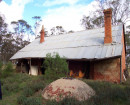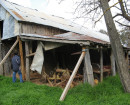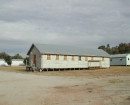Warragul Drill Hall
40 ALFRED STREET WARRAGUL, Baw Baw Shire
-
Add to tour
You must log in to do that.
-
Share
-
Shortlist place
You must log in to do that.
- Download report
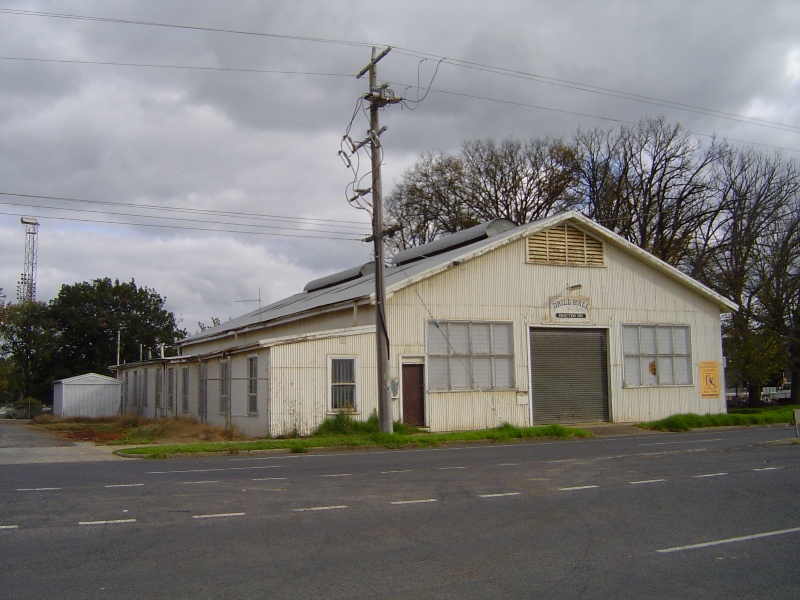

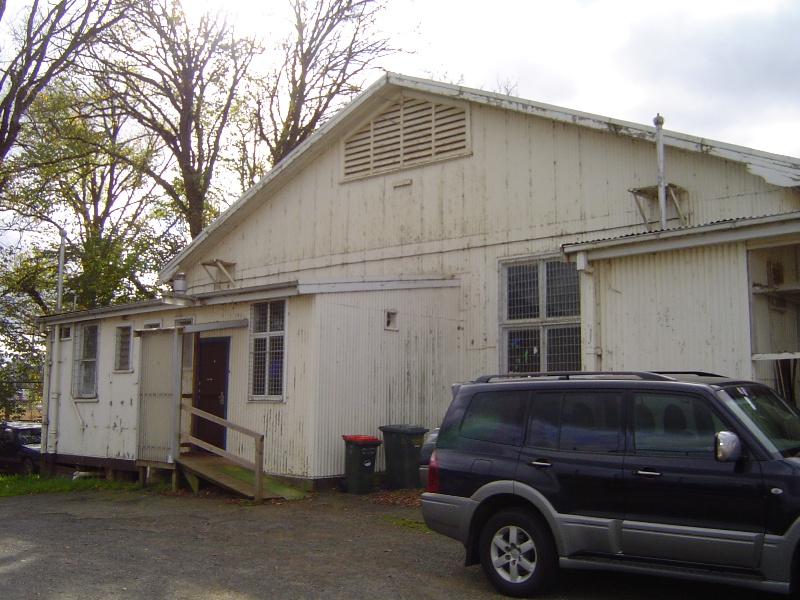
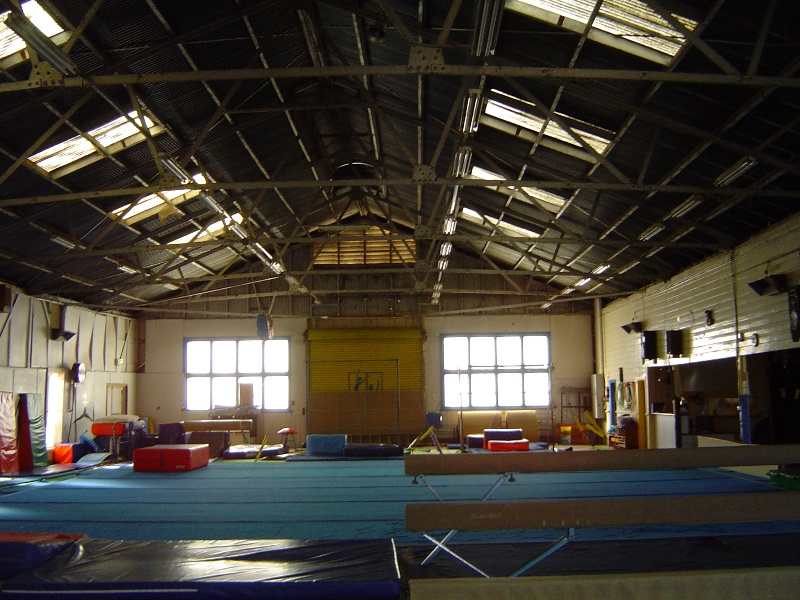
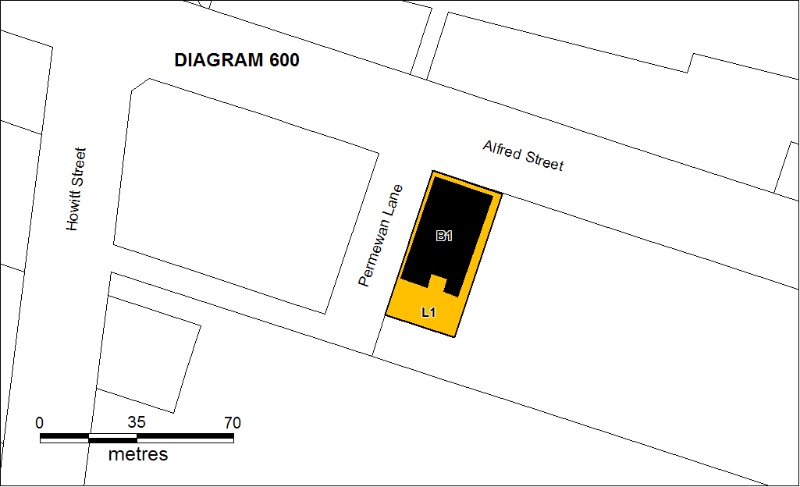
Statement of Significance
What is significant?
Warragul Drill Hall, built 1912-13, was the first of about forty timber and iron drill halls built in Victoria between 1912 and 1916 and was the prototype for all of this type built in Australia following the introduction of compulsory universal military training in 1911. The drill hall is a timber-framed, corrugated iron clad building with an iron roof, semi-circular ridge vents, and steel trusses. There is a timber louvre vent in the gable at each end of the hall. The building comprises a major hall space and a skillion section along the east side with nine small rooms designed as offices and stores which have since had their partition walls removed. In 1939 a timber floor was laid over the building's original asphalt floor. The drill hall has been owned by the Shire of Baw Baw since 1995.
Commonwealth architect John Smith Murdoch was probably responsible for the generic design, apparently developed from Queensland models, in response to the Minister for Defence's stipulation that "the cost of drill halls was to be put down to bedrock". Although the drawings for the Warragul Drill Hall were signed by Thomas Hill, Works Director, and Horace J Mackennal, draftsman of the Victorian Public Works Branch of the Commonwealth Department of Home Affairs, Murdoch had ultimate design responsibility.
Warragul Shire Council donated a block of land adjoining the showground and recreation reserve and on 13 August 1913 the Warragul Drill Hall was opened, the first of its type in Australia. Built originally for the Warragul, Drouin and Trafalgar area to house the 46th Infantry, 13th Light Horse and 45th Cadets, the drill hall has been home to a number of units. It also served as a recruiting centre during both world wars, a prisoner of war control centre from 1944 to 1946, a sports facility, and is currently used for gymnastics classes.
How is it significant?
Warragul Drill Hall is of historical and architectural significance to the State of Victoria.
Why is it significant?
Warragul Drill Hall is of historical significance as the first drill hall to be built in the Commonwealth after the introduction of compulsory universal military training in 1911. It is of historical significance as a building constructed as part of the nation's build up of military infrastructure just prior to World War I.
Warragul Drill Hall is of architectural significance as an essentially intact and representative example of the timber and iron drill halls designed by the Works Branch of the Commonwealth Department of Home Affairs between 1912 and 1916. It demonstrates its original drill and military administrative functions, through the planning of its internal spaces. The utilitarian design reflects the urgent need and high demand for this type of drill hall during this period and is in contrast to the more ornate colonial orderly rooms of the late nineteenth century and the stylish Art Deco models of the 1930s.
-
-
Warragul Drill Hall - Physical Description 1
The drill hall is a timber-framed, corrugated iron clad building with iron roof, semi-circular ridge vents, and steel trusses. A timber louvre vent was placed in the gable apex at each end of the hall. Most of the timber framed windows along the sides of the building have been replaced with aluminium windows. The building comprises a major hall space and a skillion section along the east side with nine small rooms designed as offices and stores which have since had their partition walls removed. In 1939 a timber floor was laid over the building's original asphalt floor.
Veterans Description for Public
Warragul Drill Hall - Veterans Description for Public
The Warragul Drill Hall,at 40 Alfred Street, wasbuilt between 1912-13. The Hallwas the first of about forty timber and iron drill halls built in Victoria between 1912 and 1916 and was the prototype for all of this type built in Australia following the introduction of compulsory universal military training in 1911. The opening of the Warragul Drill Hall was an important mile-stone in the military history of Gippsland, indeed Australia. It was the first Drill Hall built by the Commonwealth Government, and the first to be built on land donated by the people of a Shire to that Government. Built originally for the Warragul, Drouin and Trafalgar area to house the 46th Infantry, 13th Light Horse and 45th Cadets, the drill hall has been home to a number of units including:
'A' Squadron, 13 (Gippsland) Light Horse Regiment; 'A' Company, 45 Battalion Senior Cadets; 'F' Company 46 Infantry Battalion (Brighton Rifles); 'G' Company, 48 (Kooyong) Infantry Battalion; 52 (The Gippsland Regiment) Infantry Battalion; HQ South-Eastern Group VDC; 'A' Company, 11 Battalion (VDC); 2 Field Regiment (RAA); 31 Medium Regiment (RAA); 2 Recovery Company (RAEME); 1 and 3rd Recovery Platoons (RAEME).
It also served as a recruiting centre during both world wars, a prisoner of war control centre from 1944 to 1946, a sports facility, and is currently used for gymnastics classes.
The drill hall is a timber-framed, corrugated iron clad building with an iron roof, semi-circular ridge vents, and steel trusses. There is a timber louvre vent in the gable at each end of the hall. The building comprises a major hall space and a skillion section along the east side with nine small rooms designed as offices and stores which have since had their partition walls removed. In 1939 a timber floor was laid over the building's original asphalt floor. The drill hall has been owned by the Shire of Baw Baw since 1995.
Commonwealth architect John Smith Murdoch was probably responsible for the generic design, apparently developed from Queensland models, in response to the Minister for Defence's stipulation that "the cost of drill halls was to be put down to bedrock". Although the drawings for the Warragul Drill Hall were signed by Thomas Hill, Works Director, and Horace J Mackennal, draftsman of the Victorian Public Works Branch of the Commonwealth Department of Home Affairs, Murdoch had ultimate design responsibility.
Restructuring of the Australian Commonwealth Military Forces on 28 May 1912 and the introduction of compulsory military training highlighted the need for additional training depots -Drill Halls -in suitable locations. Warragul members of the Australian Natives Association (ANA) recognized the hardships of training men and cadets were course calling a public meeting for Thursday 12 June 1912. At this meeting, a committee presided over by Cr. H E Dorrel, a deputation was appointed to approach the Warragul Shire Council to lobby for the construction of a Drill Hall at Warragul. Timing of the deputation was impeccable, for just prior to the offer being made, the Federal Government allocated an amount of £80,000 for the purchase of land and the construction of Drill Halls throughout Australia. Warragul Shire Council donated a block of land adjoining the showground and recreation reserve and on 13 August 1913 the Warragul Drill Hall was opened at a cost of £1250.
Warragul Drill Hall - Permit Exemption Policy
/nThe purpose of the permit exemptions is to allow works that do not impact on the heritage significance of the place to occur without the need for a permit. Alterations which impact on the significance of this structure are subject to permit applications.
/nThe cultural heritage significance of the Warragul Drill Hall is principally due to its historical and architectural significance as the earliest and one of the most intact of the First World War era drill halls. The large internal volume should be retained as should the flanking office spaces although they could be refurbished.
-
-
-
-
-
WARRAGUL RAILWAY STATION
 Victorian Heritage Register H1598
Victorian Heritage Register H1598 -
WARRAGUL DRILL HALL
 Victorian Heritage Register H0600
Victorian Heritage Register H0600 -
WARRAGUL POLICE RESERVE
 Victorian Heritage Inventory
Victorian Heritage Inventory
-
-


